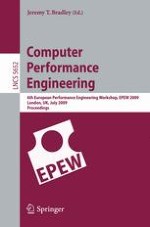2009 | Book
Computer Performance Engineering
6th European Performance Engineering Workshop, EPEW 2009 London, UK, July 9-10, 2009 Proceedings
Editor: Jeremy T. Bradley
Publisher: Springer Berlin Heidelberg
Book Series : Lecture Notes in Computer Science
